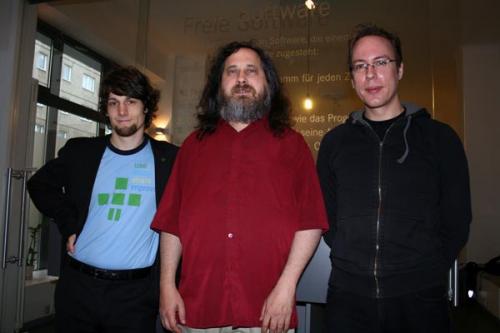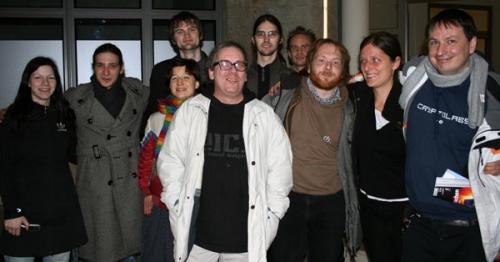This special issue documents the state of the art in
research on community wireless applications, and presents assessments
of community wireless projects in a variety of local contexts: from
large urban centers in North America to rural locations in Asia and
Latin America. Together, the papers and field notes in this special
issue reflect on a community-centric approach to communications
infrastructure development. These works describe the challenges – both
practical and theoretical – that face community wireless networking, as
well as the implications many of these projects have to support social
and economic justice around the globe.
The papers in this special issue demonstrate that
community-based approaches to Wifi development are part of a broader
integration of technology, organizational capacity, and local culture.
Social goals are part of most community Wifi projects, and integrating
these goals and the technical structures of Wifi networks is part of
what makes many community Wifi projects successful. Both full papers
and field notes explore this integration and focus on various facets of
the community wireless networking movement.
The papers included in this issue explore different
theoretical approaches that help situate community wireless networking
as social and technical phenomena. Adria provides a meta-theoretical
discussion of how Wifi networks reconfigure space and time — using the
medium theory of McLuhan and Virilio to suggest that Wifi networks have
the potential to integrate local geographical and temporal experiences.
The other papers use empirical approaches to assess the
social aspects of community wireless networking. Tapia and Ortiz
explore the claims made by operators of municipal-community networks
that these projects are addressing the digital divide. Using a textual
analysis of claims made in documents including “press releases,
requests for proposals, letters of intent, and other official policy
documents,” as well as interviews with key informants in US
municipal-community projects, they interrogate the extent to which
networks facilitate meaningful digital inclusion.
Both Cho and Forlano explore the social aspects of
community wireless networking in more detail: Cho focusing on the
development of networks and Forlano on their use. Cho reveals how the
development of community wireless networks (CWNs) builds social capital
for the participants. She develops the concept of “place-peer
community” to explain how Wifi projects define “community.” Cho also
describes how contributions to community wireless networks help to
develop ‘civic bandwidth’ among their contributors. Like Tapia and
Oritz, she identifies CWNs as developing a discourse that connects the
development of digital information and communication technologies with
efforts to improve communities.
Forlano explores the new social relationships created
through the everyday use of community-based Wifi networks, examining
the gap between media representations of Wifi as an “anytime, anywhere”
solution and the socio-cultural practices of people using free Wifi
hotspots in New York City. As she discovers, freelance workers use Wifi
hotspots to create temporary working environments that eliminate some
of the isolation of working without a fixed office, while providing a
basic infrastructure including network connectivity and electrical
power. These Wifi hotspots support communities of mobile, flexible
workers who establish relationships with a particular place and its
people. Together with Cho’s insights about the social capital mobilized
through the process of developing community Wifi networks, this
suggests that Wifi hotspots may have a unique role to play in
redefining the experiences of community in urban areas.
The field notes in this issue offer a window into the
realities of local experiments with Wifi technology. The impacts of the
projects they document depend on the local political context (Clement),
the community’s capacity (Dara, Dimanche, and O Siochru; Bhagat), the
potential for community and industry partnerships to create new ways
for community members to gather data and to aggregate it (Samanta), and
how changing our assumptions about the role of wireless infrastructure
can open up new opportunities for affordable broadband (Pietrosemoli).
These notes highlight how local contexts influence what
is considered the “public interest” and how community wireless projects
can best serve the general public. For example, Clement criticizes the
Toronto Hydro Wireless project, considered a technical success, because
its governance structure forces the network to be operated for-profit
rather than as a public service. Samanta provides an outline of some
potential social uses for an experimental wireless network that could
aggregate data from numerous wireless devices. Some suggested uses of
this network include collecting ambient audio data that, when mapped,
could provide quality of life indicators.
In the global South, the public interest is served by the
communication and applications made possible by wireless networks
established in previously un-served areas. In these contexts as well,
important challenges also emerge. Bhagat assesses the results of a mesh
network built in Mahavilachchiya village where a local entrepreneur
developed a wireless network as an extension of a computer school where
local children learned ICT skills. This Wifi connectivity project
extended internet access to homes, and encouraged more local residents
to use the internet. However, Bhagat also notes that connecting the
village to the internet may have negative impacts as well: introducing
new forms of media and new social expectations to the village and
disrupting historical cultural norms.
Dara, Dimanche and O Siochru explore how local political
and social contexts impact the design and deployment phase of one local
wireless network. From the challenging context of Cambodia, they report
on the first phase of the I-REACH project, a distributed mesh network
providing internet connectivity and local media using solar-powered
devices. The project’s challenges in obtaining permission from local
government, sourcing material, and recruiting qualified local staff and
contractors underscores the notion that community-based infrastructure
implementation is a social (and an institutional) as well as a
technical endeavor.
Ermanno Pietrosemoli and his international team of Wifi
researchers have deployed wireless links spanning hundreds of
kilometers. By proofing out a methodology for creating low-cost,
long-distance Wifi, Pietrosemoli forces us to question the notion that
Wifi is just for local networking. As a potential backhaul solution,
Wifi may offer an exceptional value for communities and constituencies
that would not otherwise be able to afford broadband connectivity.
Across these paper and notes, a common thread linking the
articles is the importance of establishing local strategies for
leveraging wireless technologies in the public interest. (Alison Powell, Sascha D. Meinrath, Introduction to the Special Issue: Wireless Networking for Communities, Citizens and the Public Interest, Vol. 4 No. 1, 2008, http://ci-journal.net/index.php/ciej/article/view/490/389)



